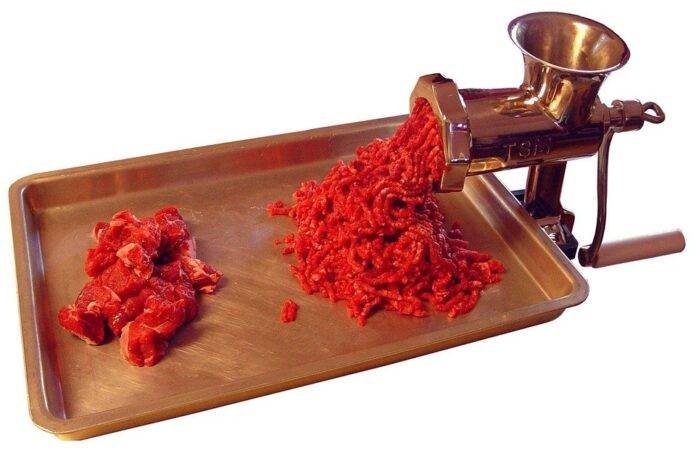Introduction
The global meat industry is a thriving sector that plays a crucial role in the economy and food supply chain around the world. As consumer demand for meat products continues to grow, it has become increasingly important for companies to innovate in their packaging solutions to ensure the quality, safety, and shelf-life of their products. In this report, we will explore the top 10 meat packaging innovations for global trade that are revolutionizing the way meat products are packaged, transported, and marketed.
1. Modified Atmosphere Packaging (MAP)
Modified Atmosphere Packaging (MAP) is a packaging technique that involves modifying the atmosphere inside the packaging to extend the shelf-life of meat products. By adjusting the levels of oxygen, carbon dioxide, and nitrogen inside the packaging, MAP can slow down the growth of bacteria and extend the freshness of the meat. This innovation has been widely adopted by meat producers and retailers around the world to ensure the quality and safety of their products.
2. Vacuum Packaging
Vacuum packaging is another popular packaging innovation in the meat industry that involves removing air from the packaging before sealing it. This creates a vacuum inside the packaging, which helps to prevent the growth of bacteria and extend the shelf-life of the meat. Vacuum packaging is commonly used for fresh meat products, as it helps to preserve the color, texture, and flavor of the meat while also reducing the risk of contamination.
3. Active Packaging
Active packaging is a type of packaging that incorporates active materials, such as oxygen scavengers or antimicrobial agents, to actively interact with the food product and extend its shelf-life. In the meat industry, active packaging technologies are used to prevent the growth of bacteria, control moisture levels, and reduce oxidation. By incorporating these active materials into the packaging, meat producers can improve the safety and quality of their products.
4. Intelligent Packaging
Intelligent packaging is a cutting-edge innovation that incorporates sensors and smart technology into the packaging to monitor and track the condition of the meat products during transportation and storage. By using intelligent packaging solutions, meat producers can ensure the quality and safety of their products by monitoring factors such as temperature, humidity, and freshness in real-time. This technology is revolutionizing the way meat products are packaged and transported, providing greater transparency and traceability throughout the supply chain.
5. Sustainable Packaging
With increasing consumer awareness about environmental sustainability, the meat industry is also focusing on developing sustainable packaging solutions that are eco-friendly and reduce waste. Sustainable packaging options, such as biodegradable materials, recyclable packaging, and compostable packaging, are gaining popularity among meat producers who are committed to reducing their carbon footprint and environmental impact. By adopting sustainable packaging solutions, meat producers can appeal to environmentally conscious consumers and contribute to a more sustainable food supply chain.
6. Retort Pouches
Retort pouches are a type of flexible packaging that is commonly used for ready-to-eat meat products, such as canned meats and meat-based meals. Retort pouches are designed to withstand high temperatures during the sterilization process, which helps to extend the shelf-life of the meat products without the need for refrigeration. This packaging innovation is ideal for long-distance transportation and distribution, as it is lightweight, durable, and easy to store.
7. Barrier Films
Barrier films are specialized packaging materials that are designed to provide a barrier against oxygen, moisture, and light to protect the quality and freshness of meat products. By using barrier films in their packaging, meat producers can prevent oxidation, reduce the risk of spoilage, and maintain the color and flavor of the meat. Barrier films are essential for extending the shelf-life of meat products and ensuring that they reach consumers in optimal condition.
8. Active Modified Atmosphere Packaging (AMAP)
Active Modified Atmosphere Packaging (AMAP) is a combination of active packaging and modified atmosphere packaging technologies that offers enhanced protection and preservation of meat products. By incorporating active materials, such as oxygen scavengers or carbon dioxide emitters, into the modified atmosphere packaging, AMAP can further extend the shelf-life of the meat products and improve their overall quality. This innovative packaging solution is ideal for high-value meat products that require extended shelf-life and premium quality.
9. Smart Labels
Smart labels are a type of intelligent packaging technology that uses RFID (Radio Frequency Identification) or NFC (Near Field Communication) technology to track and monitor the condition of meat products throughout the supply chain. By scanning the smart labels with a smartphone or RFID reader, consumers and retailers can access information about the origin, quality, and safety of the meat products. Smart labels provide real-time data on factors such as temperature, humidity, and storage conditions, allowing for greater transparency and traceability in the meat industry.
10. Active Oxygen Scavengers
Active oxygen scavengers are a type of active packaging material that is designed to absorb oxygen from the packaging to prevent oxidation and spoilage of meat products. By removing oxygen from the packaging, active oxygen scavengers can extend the shelf-life of the meat products and maintain their freshness and quality. This innovative packaging solution is essential for preserving the color, flavor, and texture of meat products during transportation and storage, ensuring that they reach consumers in optimal condition.




